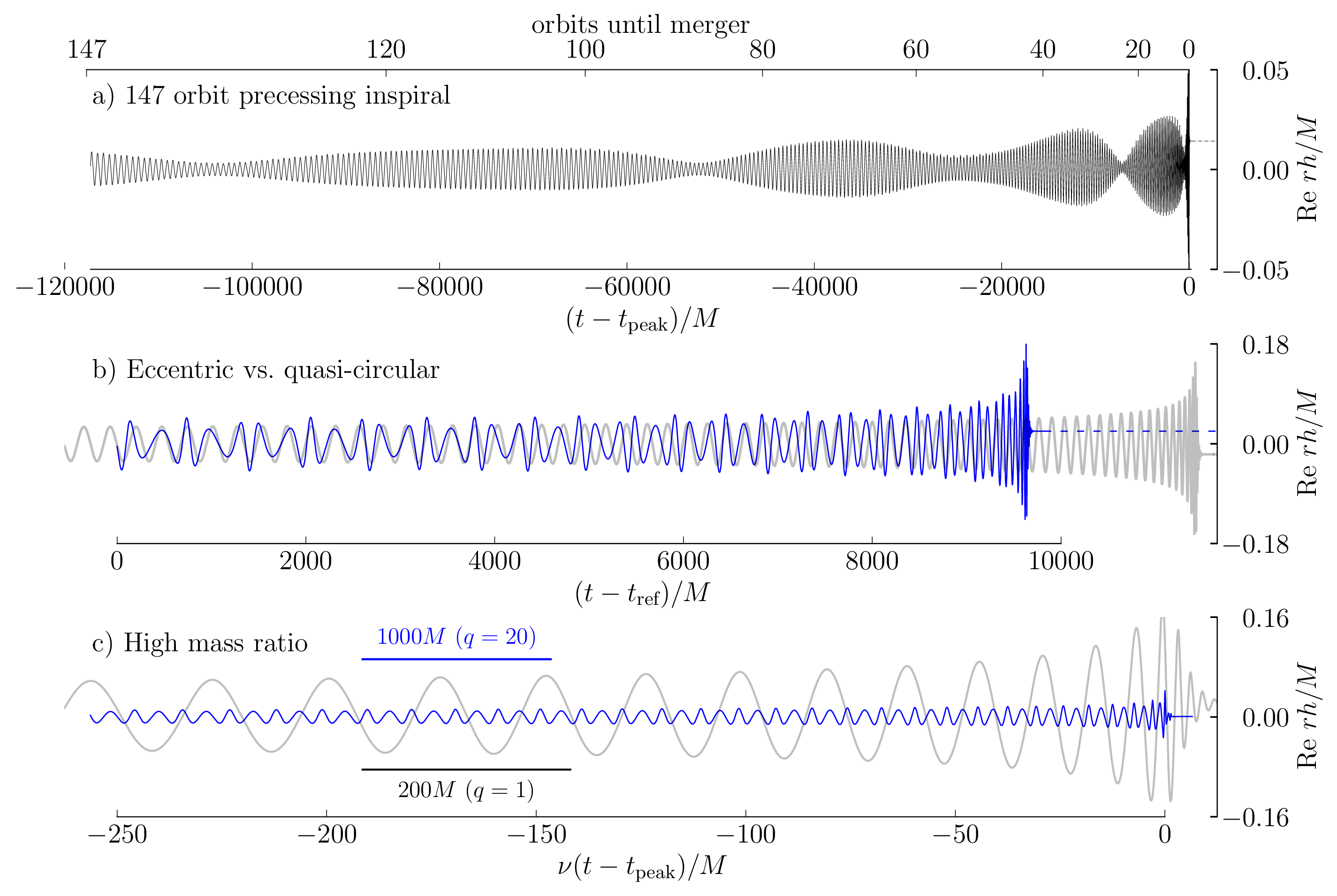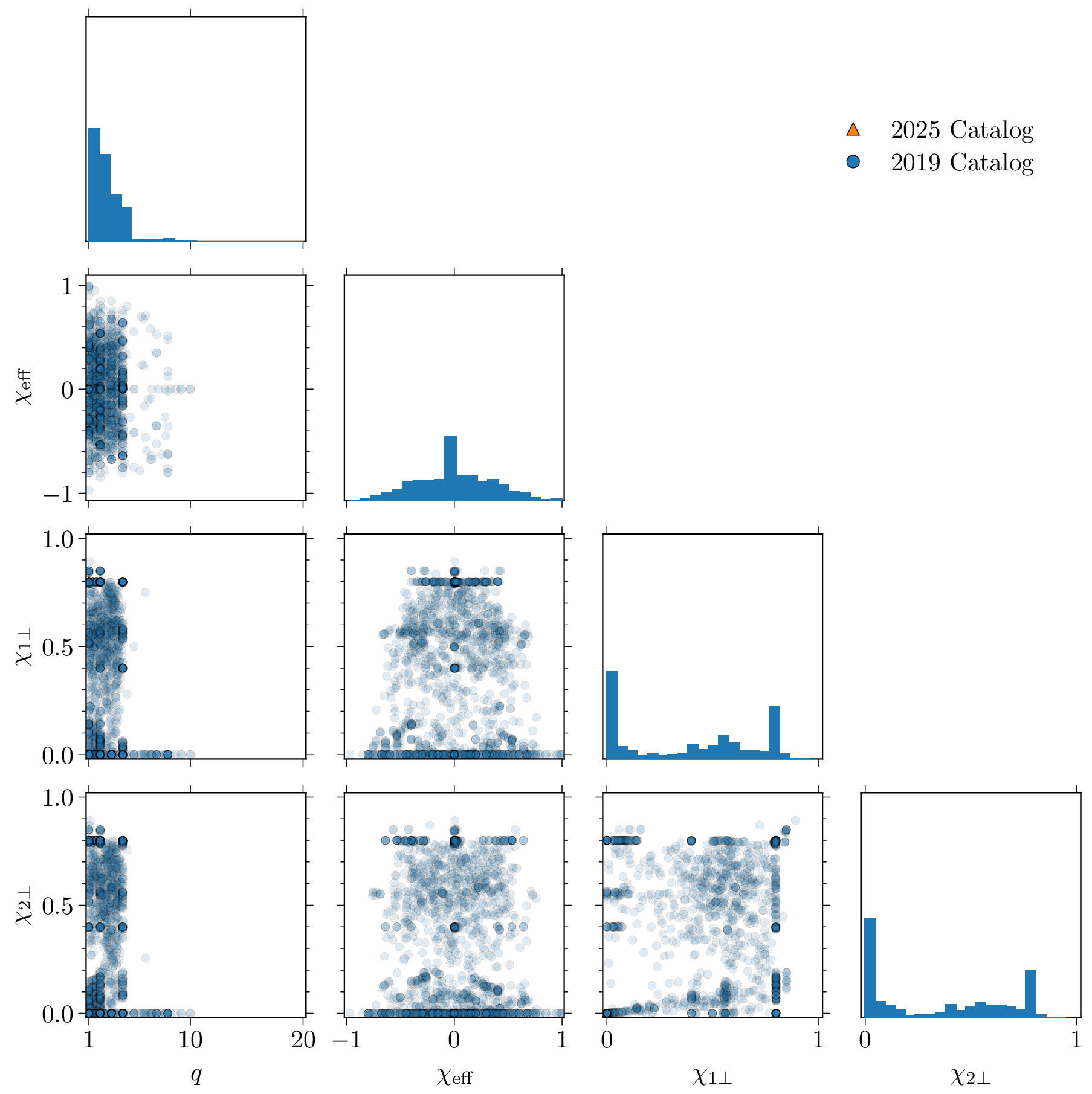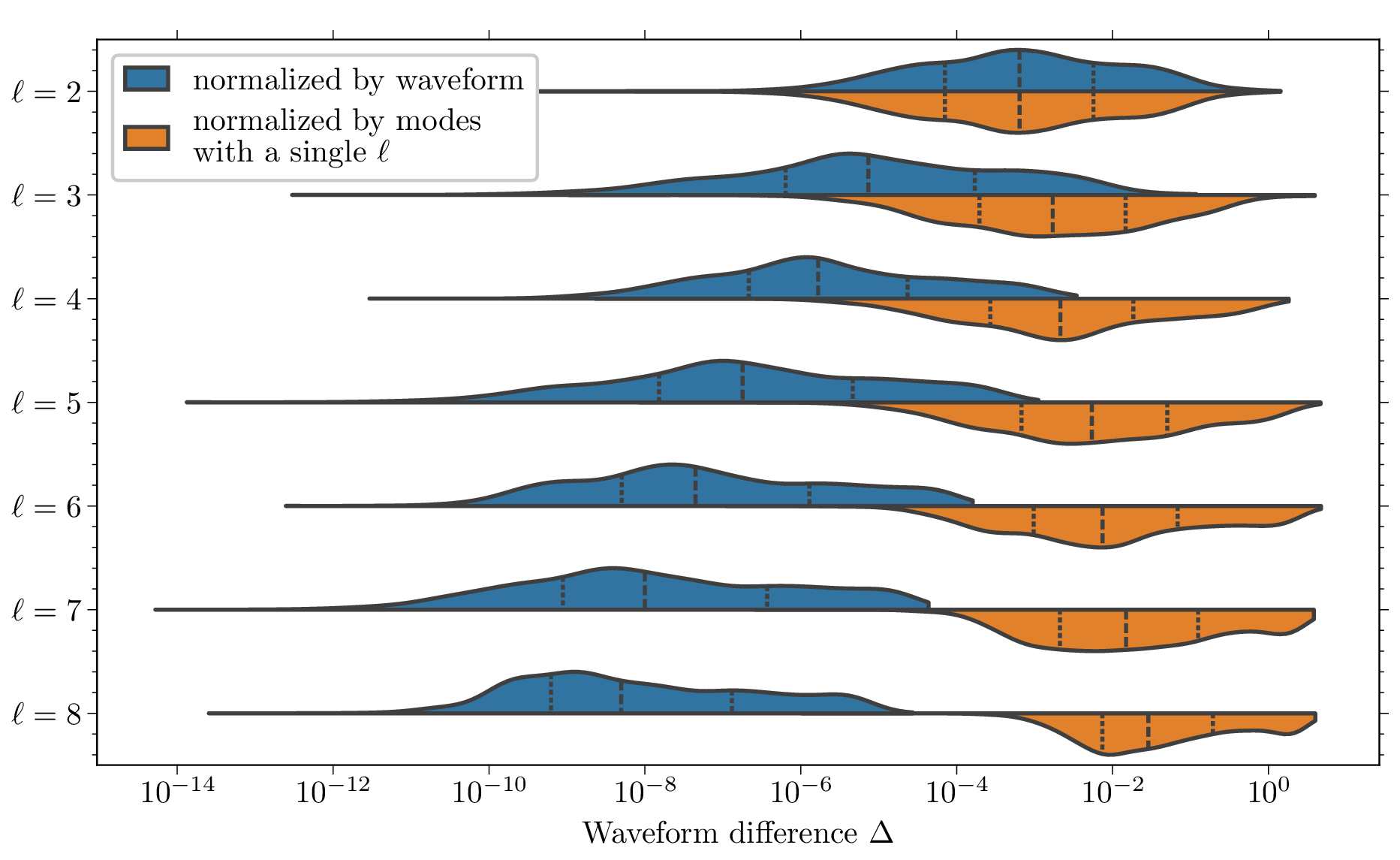We are excited to release a major update to our catalog of binary black hole simulations, available here. Such simulations are key to LIGO/Virgo/KAGRA being able to extract science from their gravitational wave detections. This catalog update comes six years after our last catalog, with too many improvements to list here. Our catalog now has 3,756 simulations, the largest and most accurate numerical relativity catalog to date. This data is freely available via our data server (https://data.black-holes.org/) and through the sxs package for python. Here’s a sampling of some more extreme systems in our catalog, showcasing a lot of the physics we can capture:

The median simulation length is 22 orbits, while the longest is 148 orbits. Here’s a visual overview of the before and after of our parameter-space coverage:


Our spectral methods continue to be highly efficient—over 1,000 times more efficient than finite-difference methods of comparable accuracy. We always provide multiple resolutions, so anyone can verify our numerical convergence. Eight pages of the new paper are dedicated to studying the quality of our waveforms! For example, one of our plots (at right) shows how well different angular harmonics are converging (we provide all the way up to \(\ell = 8 \)). Our median waveform difference between resolutions is \(4\times 10^{-4}\).
Over the years, we made many improvements to the Spectral Einstein Code (SpEC) that performed all these simulations (Sec. 3 discusses our methods and some of these improvements). More recent simulations are more accurate than older ones, and some old simulations had issues that were only uncovered recently. Therefore we now deprecate simulations if we need (though the old data remains available, by passing an argument in the sxs package). Out of the 2,018 simulations in the last catalog paper, we deprecated 282. We added 2,020 new non-deprecated simulations (and even uploaded another 112 new but deprecated simulations). Because we generated so much data, we needed a new waveform format, which is typically 6 times more compressed than before. The new format is handled seamlessly by the sxs package, which also fetches and caches waveforms (and other data) as needed.
Six years is a long time, so there are too many details to summarize here. You can read about all of them in the new SXS catalog paper. We have already been doing a ton of science with this data. We make it publicly available so everyone has high-quality binary black hole simulation data at their fingertips for their research! Of course, we’re not done yet—there’s a lot more work to do: higher mass ratios, higher eccentricity, and meeting the accuracy requirements of next-generation detectors. Stay tuned for the next version of our catalog!